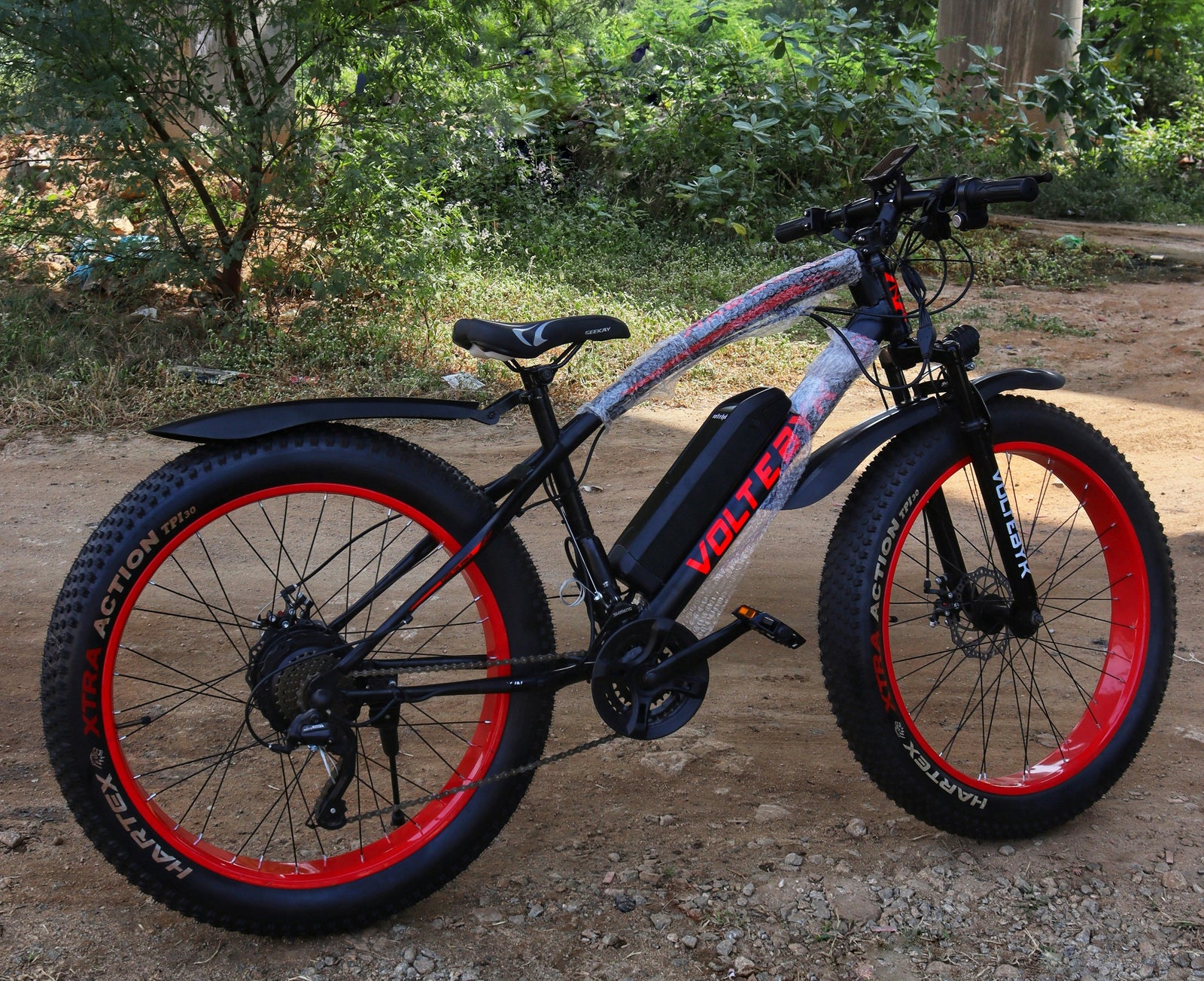A Guide to Long-Lasting Power for Your Ride
In the realm of modern transportation, electric bikes (or e-bikes) have emerged as a popular choice for eco-conscious commuters and outdoor enthusiasts alike. Offering the perfect blend of pedal power and electric assistance, these two-wheeled wonders have revolutionised the way we travel short to medium distances. However, the key to unlocking the full potential of your e-bike lies in choosing the right battery—one that ensures long-lasting power and reliability for your ride.
In this comprehensive guide, we'll delve into the intricacies of e-bike batteries, exploring the different types available, factors to consider when making your selection, and essential maintenance tips to prolong battery life.
Understanding E-Bike Batteries: The Basics
Before delving into the specifics of choosing the right e-bike battery, it's essential to grasp the fundamentals. E-bike batteries serve as the powerhouse of your electric bike, providing the necessary energy to propel you forward. Most e-bikes utilise rechargeable lithium-ion batteries due to their high energy density, lightweight nature, and ability to hold a charge over multiple cycles.
Types of E-Bike Batteries
- Integrated vs. Removable Batteries: Some e-bikes come with integrated batteries, seamlessly blending into the bike's frame for a sleek appearance. On the other hand, others feature removable batteries, allowing for easy removal and charging. Removable batteries offer added convenience, especially for riders who may not have access to a power outlet near their bike storage.
- Voltage and Amp-Hour (Ah) Rating: E-bike batteries come in various voltage and Ah ratings, determining their overall power output and capacity. Higher voltage batteries generally offer greater torque and acceleration, while higher Ah ratings provide increased range. It's crucial to strike a balance between voltage and Ah based on your riding preferences and needs.
- Battery Chemistry: While lithium-ion batteries reign supreme in the e-bike realm, there are variations in battery chemistry, such as lithium iron phosphate (LiFePO4) and lithium polymer (LiPo). Each type has its unique characteristics, including energy density, lifespan, and safety. LiFePO4 batteries, for instance, are known for their longevity and thermal stability, making them ideal for frequent riders seeking durability.
Factors to Consider When Choosing an E-Bike Battery
- Range Requirements: Consider your typical riding distance and frequency when selecting an e-bike battery. If you're a daily commuter tackling long distances, opt for a battery with a higher Ah rating to ensure ample range without frequent recharging.
- Weight and Size: Battery size and weight can significantly impact your e-bike's handling and manoeuvrability. While larger batteries offer extended range, they may add bulk and affect the bike's overall balance. Strike a balance between capacity and weight to maintain a comfortable riding experience.
- Charging Time: Evaluate the charging time required for your chosen battery. While some batteries charge quickly, others may take several hours to reach full capacity. Assess your charging preferences and schedule accordingly to avoid disruptions to your riding routine.
- Compatibility: Ensure compatibility between your chosen battery and e-bike model to prevent compatibility issues or damage to the bike's electrical system. Consult with the manufacturer or a reputable dealer to confirm compatibility before making your purchase.
- Warranty and Support: Opt for batteries backed by a comprehensive warranty and reliable customer support. A robust warranty ensures peace of mind against potential defects or premature battery failure, while responsive customer support can address any concerns or technical issues that may arise.
Maintaining Your E-Bike Battery for Longevity
Proper maintenance is key to maximising the lifespan and performance of your e-bike battery. Follow these tips to keep your battery in top condition:
- Proper Storage: Store your e-bike in a cool, dry place away from direct sunlight and extreme temperatures. Avoid leaving the battery fully discharged for extended periods, as this can lead to irreversible capacity loss.
- Regular Charging: Charge your battery after each ride or whenever the charge level drops below 50%. Avoid overcharging or fully depleting the battery, as both extremes can diminish battery longevity over time.
- Avoid Extreme Conditions: Refrain from exposing your e-bike battery to extreme heat or cold, as it can negatively impact battery performance and lifespan. Additionally, avoid riding in heavy rain or submerging the battery in water to prevent damage.
- Routine Inspection: Periodically inspect your e-bike battery for signs of wear, damage, or corrosion. Tighten any loose connections and clean the battery terminals with a soft, dry cloth to maintain optimal conductivity.
- Professional Maintenance: Schedule regular maintenance checks with a qualified technician to ensure proper functioning of your e-bike's electrical components, including the battery, motor, and controller.
Conclusion
Choosing the right e-bike battery is essential for unlocking the full potential of your electric ride. By considering factors such as battery type, capacity, and compatibility, you can select a battery that delivers long-lasting power and reliability for your cycling adventures. With proper maintenance and care, your e-bike battery will provide countless miles of eco-friendly transportation and outdoor enjoyment. So, invest wisely and ride on with confidence knowing that you've made the right choice for your e-bike's power source.

